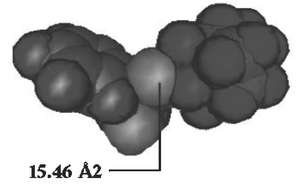Scaled polar surface area descriptors: development and application to three sets of partition coefficients†
Abstract
Modifications to the standard definition of polar surface area (PSA) are reported and tested against the octanol–water, chloroform–water and cyclohexane–water partition coefficients of 110 organic and drug-like molecules. It is shown that increasing the flexibility of PSA-based models can lead to some improvements in accuracy, but that these still fall well short of previously published methods. To compete with such methods, PSA-based descriptors must be scaled according to the known hydrogen bonding characteristics of common functional groups. Introducing this scaling markedly improves accuracy, with predictive errors typically around one-half of a log P unit, confirmed by splitting the data into training and test sets. All models developed follow known characteristics of the partition coefficients considered and are statistically and chemically valid.


 Please wait while we load your content...
Please wait while we load your content...